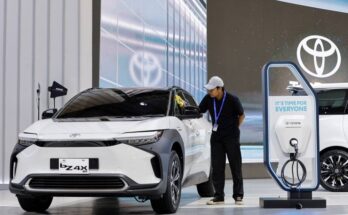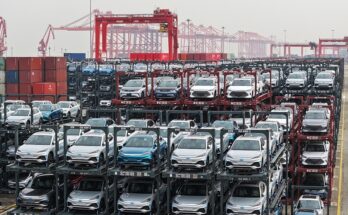Before the majority of people could comprehend the magnitude of what was unfolding, China became the world’s largest producer and consumer of electric vehicles (EVs). And the momentum is still going strong: in only the last two years, China’s yearly sales of EVs have increased from 1.3 million to a staggering 6.8 million, making 2022 the eighth year in a row that China has been the largest EV market in the world. In comparison, the United States sold only about 800,000 EVs in 2022.
China’s auto industry has experienced steady growth even during the epidemic thanks to its supremacy in the EV market, which has also aided China’s efforts to become a global leader in climate policy. Obviously, it just didn’t happen overnight but the question is how exactly did China manage to pull this off?
Related: 59% NEVs of the World Were Sold in China in Q1, 2023
In order to support both the supply and demand of EVs, the Chinese government has long played a significant role. A number of local EV companies have developed as a result of hefty government subsidies, tax breaks, procurement contracts, and other policy incentives, and they have continued to optimize new technologies so they can suit the practical needs of Chinese consumers. This has led to the development of a sizable community of young vehicle buyers.
When did China start investing in EVs and why?
China’s auto industry was in an uncomfortable situation in the early 2000s before it completely entered the field of EVs. It was a leader in the production of conventional internal combustion automobiles, but there were no homegrown brands that might someday compete with the international manufacturers who dominated this market. According to Tu Le, managing director of Sino Auto Insights, a business consulting firm that specializes in transportation:
“They realized … that they would never overtake the US, German, and Japanese legacy automakers on internal-combustion engine innovation. And research on hybrid vehicles, whose batteries in the early years served a secondary role relative to the gas engine, was already being led by countries like Japan, meaning China also couldn’t really compete there either. This pushed the Chinese government to break away from the established technology and invest in a completely new territory: cars powered entirely by batteries.”
The risks were extremely serious because, at the time, EVs were still merely niche experiments produced by companies like General Motors or Toyota, which typically terminated them after only a few years. But there was a large potential reward: China may gain an advantage in what could be a sizable portion of the automobile sector.
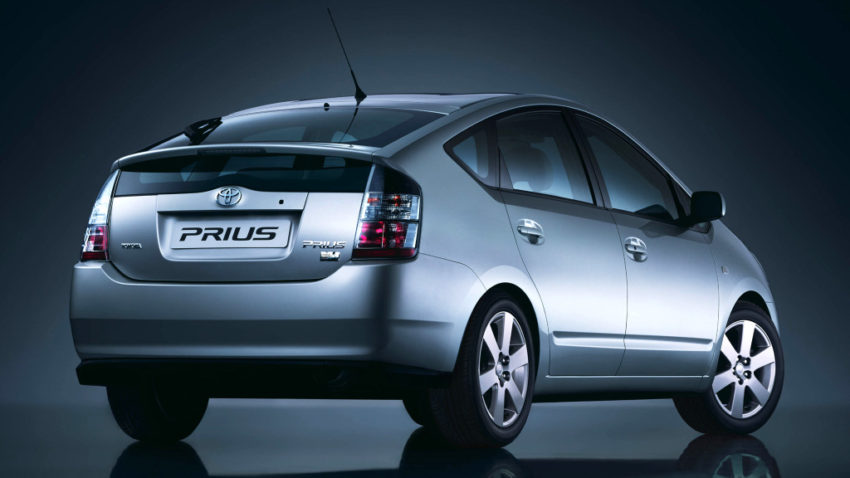
While this was going on, developing nations with a strong reputation for making petrol or hybrid cars had less incentive to explore new vehicle technologies. With hybrids, for instance, Japan was already standing at the peak, so it failed to see why it needed to electrify [the auto industry], says He Hui, senior policy analyst and China regional co-lead at the International Council on Clean Transportation (ICCT), a nonprofit think tank. Japanese thought:
“I can already produce cars that are 40% more energy efficient than yours. It will take a long time for you to even catch up with me.”
Additionally, EVs had the potential to help China with a number of other significant issues, including reducing the country’s chronic air pollution, its dependency on petroleum imports, and its ability to recover economically from the 2008 financial crisis. It appeared like a win-win situation for Beijing.
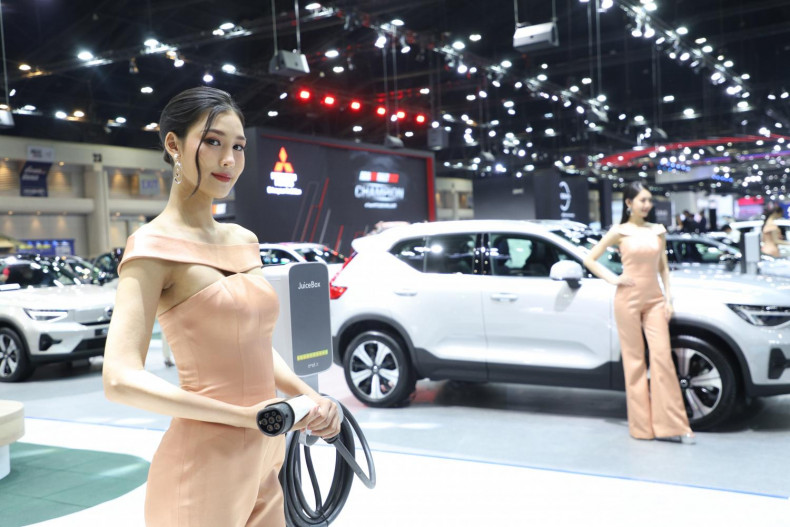
China already possessed a few structural advantages. Even though EV production uses a different technology, the existing auto supply chain must still work together, and China had an accredited one. The factories that supported its gas-car industry might be converted to support a developing EV industry using the manufacturing capabilities and low-cost materials that kept them running.
Related: Chinese NEV Startups Take Lead in JD Power Customer Satisfaction
As a result, the Chinese government started making investments in related technologies as early as 2001. In the country’s most comprehensive economic strategy, the Five-Year Plan, EV technology was included as a priority science research project.
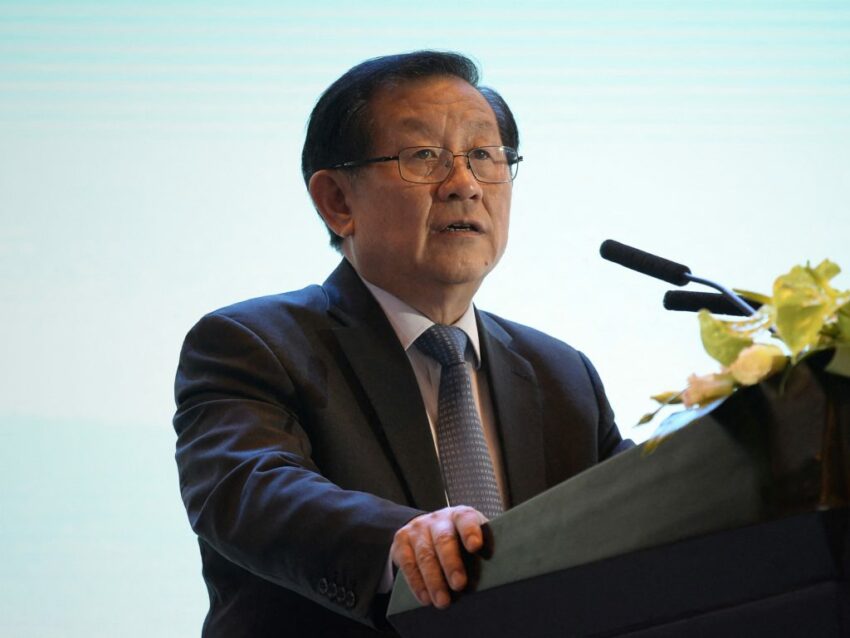
Then, in 2007, Wan Gang, an auto engineer who had spent ten years working for Audi in Germany, was appointed China’s minister of science and technology, giving the sector a huge boost. Wan tested Tesla’s first EV model, the Roadster, in 2008, the year it debuted. Wan was an avid supporter of electric vehicles and is credited with making the decision for the country to embrace electric vehicles wholeheartedly. Many also call him China’s Father of EVs. Since then, EV development has been consistently prioritized in China’s national economic planning.
New Energy Vehicles (NEVs)
China created the term NEV (new energy vehicles) that actually defines cars that are eligible for subsidies. These include battery electric vehicles (BEVs or simply EVs), plug-in hybrids (PHEVs), and range extenders (EREVs). Do note that hybrids (HEVs) are not classified as NEVs in China because that (hybrid tech) was something initiated by the Japanese while China was the first to launch a mass-produced plug-in hybrid in 2008 in the form of BYD F3DM.
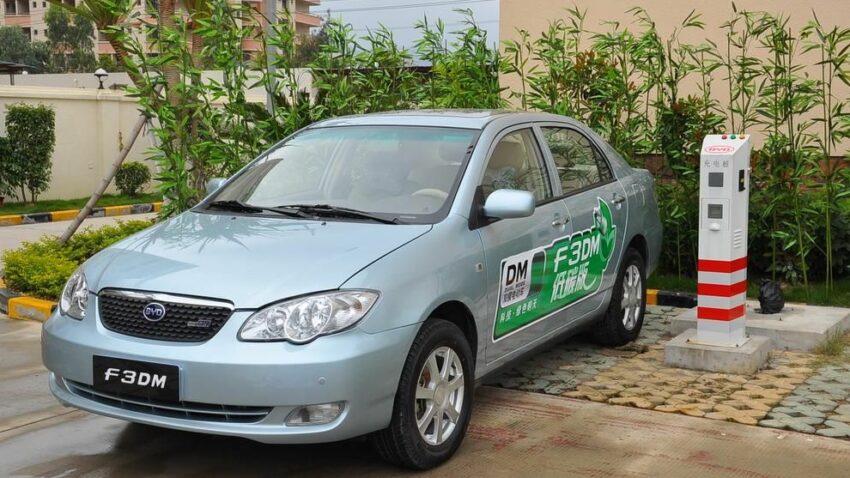
And with hybrids not qualifying for subsidies has been a major blow to Japanese or Western automakers who had access to this technology. While BEVs, PHEVs, and EREVs were entirely Chinese domains, domestic players reaped the greatest benefits from NEV subsidies.
So what exactly did the government do?
The Chinese government is highly adept at concentrating resources on the industries it wishes to expand, and this trait is engrained in the very nature of the nation’s economic system. For semiconductors, it recently has been doing the same.
Related: China Implements a Multi-Pronged Strategy to Drive NEV Boom
Beginning in 2009, the country started providing financial aid to EV manufacturers who make buses, taxis, or personal vehicles for consumers. Less than 500 EVs were sold in China during that year. However, having more cash allowed businesses to continue investing in their models. Additionally, it meant that people could purchase their own EVs for less money.
The government invested more than 200 billion RMB ($29 billion) in related tax incentives and subsidies between 2009 and 2022. Even though the subsidy scheme was officially discontinued at the end of the previous year and replaced with a more market-oriented system known as “dual credits,” it had already achieved its goal: the more than 6 million EVs sold in China in 2022 represented more than half of all EV sales worldwide.

In the early years, the government also provided procurement contracts to domestic EV companies to assist them stay afloat. The first EVs appeared in China in 2010 and were a part of its extensive public transport system before the consumer market welcomed them. According to Ilaria Mazzocco, a senior fellow in Chinese business and economics at the Center for Strategic and International Studies:
“China has millions of public transits, buses, taxis, etc. They provided reliable contracts for lots of vehicles, so that kind of provided a revenue stream. In addition to the financial element, it also provided a lot of [road test] data for these companies.”
Subsidies and tax cuts, albeit important, are not the only state initiatives that pushed people to buy electric vehicles. In populated areas like Beijing, car license plates have been rationed for more than a decade. It might still take years or thousands of dollars to obtain a car license plate for a gasoline-powered vehicle but for those who opt to buy an EV, the procedure was essentially waived.

Last but not least, local governments have often collaborated closely with EV companies to develop standards that can assist the latter in growing. For example, BYD, the Chinese automaker currently challenging Tesla’s EV dominance, rose to recognition by maintaining close connections with the southern city of Shenzhen and making it the world’s first city to totally electrify its public bus fleet.
How did China use Tesla to its advantage?
In Tesla’s case, the Chinese played pretty smartly. When the Chinese government provided subsidies, it did not just do so for domestic companies. In reality, Tesla’s growth to become the largest EV company has been closely linked to the development of China’s electric vehicle (EV) industry. According to Alicia García-Herrero, chief economist for Asia Pacific at Natixis, an investment management firm:
“In my opinion, this was very smart. Rather than pissing off the foreigners by not offering the subsidies that everybody else gets, if you want to create the ecosystem, give these subsidies to everybody, because then they are stuck. They are already part of that ecosystem, and they cannot leave it anymore.”
In addition to offering financial incentives, local Chinese governments have been actively encouraging Tesla to establish manufacturing facilities there. Due to the helpful local policies, it was able to construct its Gigafactory in Shanghai quite fast in 2019. “It’s unheard of to go from essentially a dirt field to job one in about a year,” says Tu. It suggests that the central government, and especially the Shanghai government, removed all obstacles and bottlenecks to advance Tesla to that degree.
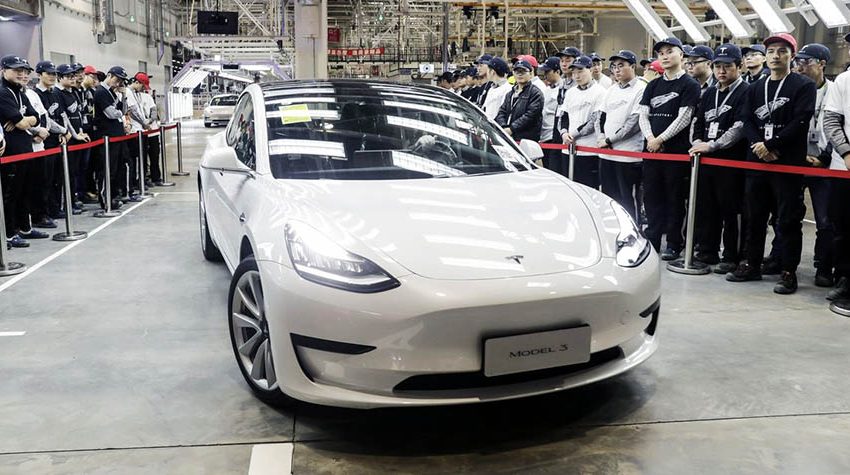
Today, China is an indispensable part of Tesla’s supply chain. The Shanghai Gigafactory is currently Tesla’s most productive manufacturing hub and accounts for over half of Tesla cars delivered in 2022.
Related: First Tesla Model Y with BYD Blade Battery Rolled Off the Production Line in Germany
However, there were two-way gains; Tesla also brought quite significant gains for China. The company is responsible for the “catfish effect” on the Chinese EV market, which has compelled local EV makers to develop and compete with Tesla in every area from affordability to technological innovation. And now that domestic brands are attacking China hard, even Tesla needs to find out how to be competitive there.
The battery technology role
The battery cells, which can account for up to 40% of the cost of a car, are the most essential part of an electric vehicle. A powerful, dependable, yet reasonably priced battery is the most crucial component in creating an EV that is commercially feasible.
Related: CATL Unveils New Qilin EV Battery with 1,000km Range
According to Max Reid, senior research analyst for EVs and battery supply chain services at global research firm Wood Mackenzie, Chinese companies made significant strides in battery technology. More precisely, compared to the lithium nickel manganese cobalt (NMC) batteries that are far more common in the West, Chinese companies have promoted lithium iron phosphate batteries, or LFP technology, over the past decade.
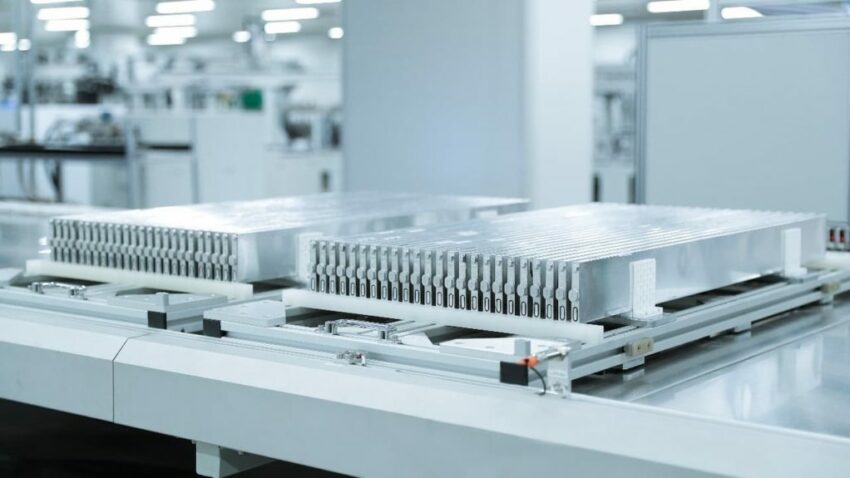
LFP batteries are safer and less expensive now than they were previously when they were less effective in cold temperatures and had a lower energy density. However, certain Chinese battery companies, including Contemporary Amperex Technology Co. Limited (CATL), spent a decade exploring LFP technology while others abandoned it, and they were able to close the energy density difference.
Related: Zeekr to be the First to have CATL’s Highly Efficient Battery
The advantages of LFP batteries, which made up one-third of all EV batteries as of September 2022, are now being recognized by the EV industry once more. Max Reid goes on to add:
“That shows you how far LFP has come, and that’s purely down to the innovation within Chinese cell makers. And that has brought Chinese EV battery [companies] to the front line, the tier-one companies.”
One significant benefit China has had in the production of batteries is its control over a large portion of the raw materials. The country doesn’t necessarily have the most natural resources for making batteries, but it does have the bulk of the world’s refining capacity for important elements including cobalt, nickel sulfate, lithium hydroxide, and graphite. Garca-Herrero believes that China’s dominance over chemical materials is “the ultimate control of the sector, which China has clearly pursued for years well before others even figured this was something important.”
Related: Volkswagen Considers NIO, XPENG, BYD and CATL of China as Direct Competitors
Other countries are already making agreements with Chile and Australia to take ownership of rare-earth metal mines as they have realized the value of battery materials. However, China’s head start has provided local companies with a persistently reliable supply network. And because China’s manufacturing capacity has been and is still being expanded, Reid claims that Chinese-made EV batteries are not only cheaper but also more widely available.
What does China’s EV market look like now?
As a result of all of this, China now has a significantly higher domestic demand for EVs than the rest of the world: a survey by the US consulting firm AlixPartners found that more than 50% of Chinese respondents were considering battery-electric vehicles as their next car, which is twice the global average and the highest percentage in the world.
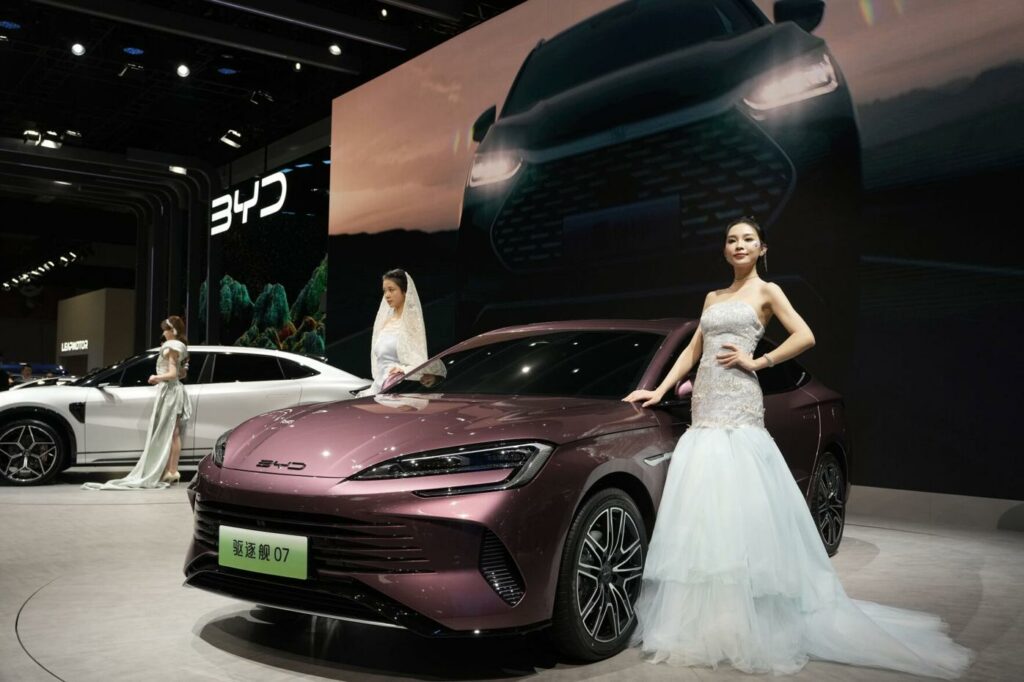
Many Chinese-made options are available for EV buyers, including BYD, SAIC-GM-Wuling, Geely, Nio, Xpeng, and LiAuto. The latter three are startups focused solely on electric vehicles that went from nothing to well-known brands in less than ten years, as opposed to the previous three, which are instances of conventional car companies that successfully switched to EVs early on.
Related: For EVs in China, The Future is Now
And the emergence of these companies (and other Chinese tech behemoths) paralleled the rise of a new generation of vehicle buyers who do not regard Chinese brands as less prestigious or of lower quality than foreign brands. According to Tu Le:
“Because they’ve grown up with Alibaba, because they’ve grown up with Tencent, they effectively were born into a digital environment, and they’re much more comfortable with Chinese brands versus their parents, who would still rather likely buy a German brand or a Japanese brand. Furthermore, the fact that these Chinese brands have sprinkled a little bit of nationalism into their marketing strategy also helps.”
Can other countries replicate China’s success?
Almost undoubtedly, many countries are right now envious of China’s EV experience. Even if they follow China’s lead, it might not be so simple for them to succeed in the same way.
Related: Tesla’s 20th Anniversary and How Toyota Missed the EV Opportunity
While the United States and certain European countries match the objective conditions for supercharging their own EV businesses, such as technological capability and established supply networks, ICCT’s He Hui points out that they have different political systems. “Is this country willing to invest in this sector? Is it willing to provide special protection to this industry and maintain an extraordinarily high degree of policy priority for a long time?” she wonders. “That’s hard to say.”
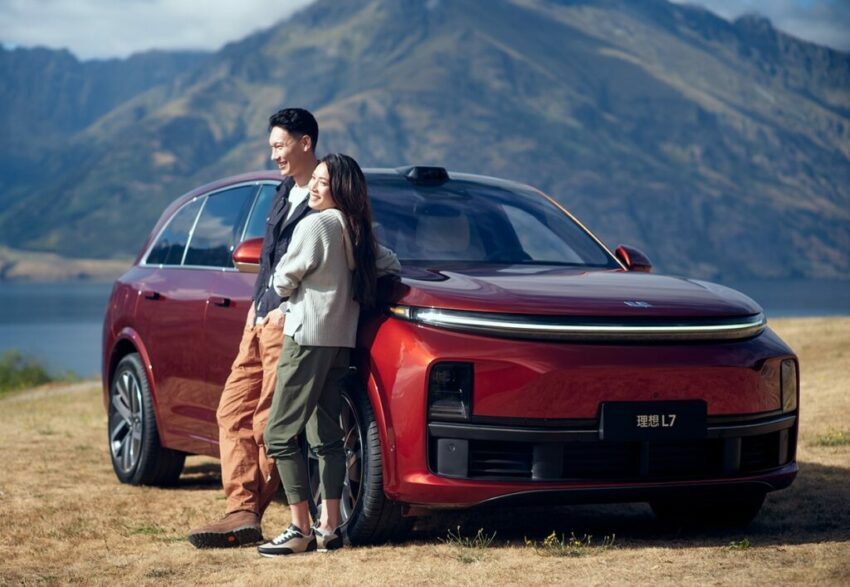
“I think the interesting question is, would a country like India or Brazil be able to replicate this?” Mazzocco asks. These countries don’t have a traditional auto industry as strong as China’s, and they also don’t have the Chinese government’s sophisticated background in handling massive industrial policies through a diverse set of policy tools, including credits, subsidies, land use agreements, tax breaks, and public procurements. But China’s experience suggests that EVs can be an opportunity for developing countries to leapfrog developed countries. “It’s not that you can’t replicate it, but China has had decades of experience in leveraging these [systems],” says Mazzocco.
Chinese EV brands are now looking to other markets
For the first time, Chinese EV companies believe they have the potential to develop outside their borders and become global brands. Despite its saturated industry and sensitive political circumstances, some of them are already penetrating the European market and considering expanding to the United States. That is something that could never have been imagined with Chinese ICE automobiles.
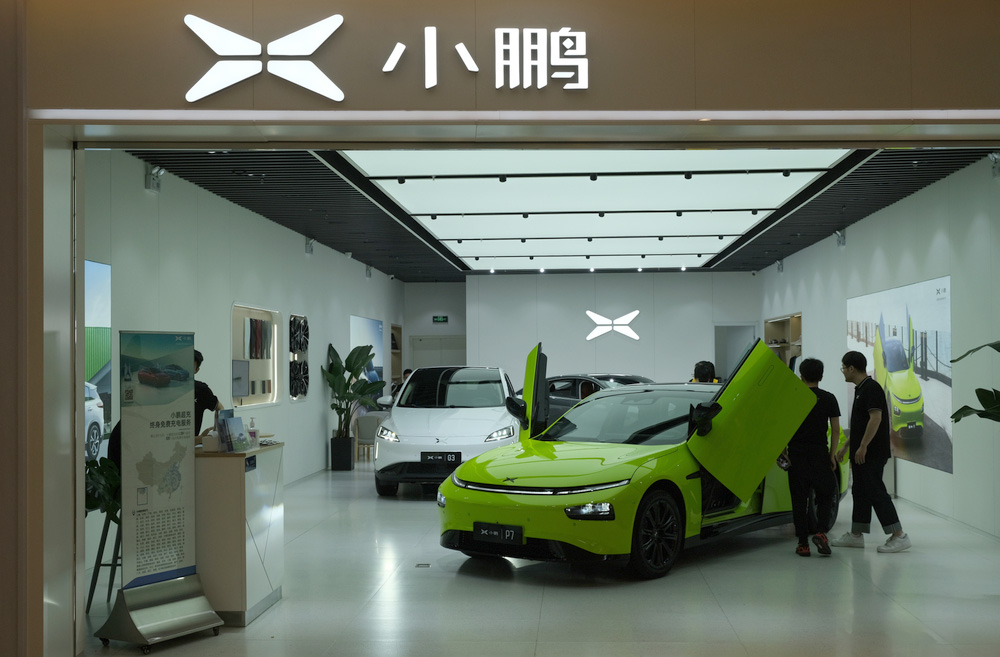
However, given the current geopolitical situation, these companies are also putting themselves at risk by expanding into other nations that do not have strong relations with China. Some may seek to defend their own car industry, while others may consider Chinese brands as a threat to national security, such as India.
Related: EVs to Continue Dominate China’s Auto Market in 2023 as Tax Rebates Resume
For these and other reasons, the largest growth potential will most likely come from “emerging Asia,” according to Garca-Herrero. Even if China’s domestic market gets saturated, the region will still require additional EVs to complete its energy transition.

This is why China’s emphasis on EV supply has a dual benefit: it decreases China’s reliance on automobile imports from Western countries while also creating a new long-term export business. Some countries, such as Indonesia, are already chasing Chinese funding to develop electric vehicle plants.
China exported 679,000 EVs in 2022, a 120% increase over the previous year. There’s little reason to believe the numbers won’t continue to rise.
from: Technology Review

A computer animation professional with over 23 years of industry experience having served in leading organizations, TV channels & production facilities in Pakistan. An avid car enthusiast and petrolhead with an affection to deliver quality content to help shape opinions. Formerly written for PakWheels as well as major publications including Dawn. Founder of CarSpiritPK.com

